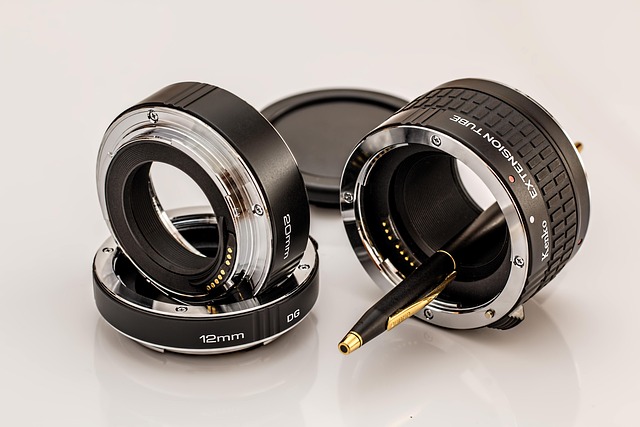When we think of a temporary position in the context of fitness, we often picture a brief stance or pose that is held for a limited amount of time. In reality, the concept of a temporary position is central to effective stretching routines. It allows the body to access a controlled range of motion, promote flexibility, and reduce the risk of injury during training and everyday activity.
The Role of Temporary Positions in Stretching
A temporary position is not a static stance that you hold for hours, but rather a precise, deliberate alignment that you maintain for several seconds. By holding a stretch in this intentional posture, the muscle fibers are coaxed into elongation, and the nervous system learns to relax the tension that normally resists movement. This brief but focused approach is especially valuable for athletes, fitness enthusiasts, and anyone looking to maintain a healthy, mobile body.
- Improved muscle elasticity
- Enhanced joint range of motion
- Decreased risk of strains and sprains
- Increased blood flow to active tissues
Key Principles of Holding a Temporary Position
There are several guiding principles that help you make the most of a temporary position during your stretch:
- Alignment: Keep your joints in a natural alignment. Avoid forcing a bend that places undue stress on the cartilage or ligaments.
- Breathing: Pair the hold with deep, steady breaths. Inhale to prepare the body, exhale as you deepen the stretch.
- Progression: Start with a light hold and gradually increase the duration and intensity as flexibility improves.
- Mindfulness: Focus on the sensation in the targeted muscle rather than distractions.
- Safety: Listen to your body. If you feel sharp pain, release the stretch immediately.
Integrating Temporary Positions Into a Warm‑Up Routine
A warm‑up that incorporates temporary positions sets the foundation for a productive workout. By gradually mobilizing major muscle groups, you create a safe environment for more strenuous activity. Here’s a simple sequence you can follow:
- Dynamic leg swings for 30 seconds per leg.
- Hip circles held in a temporary position at the peak of each rotation.
- Standing quadriceps stretch: hold for 15–20 seconds while maintaining balance.
- Chest opener: clasp hands behind your back, hold for 20 seconds, then release.
- Upper back rotation: gently twist while keeping shoulders grounded, hold briefly.
Notice that each pose is held only long enough to engage the muscle without overexertion. This approach keeps your heart rate elevated while ensuring mobility is preserved.
After‑Workout Recovery: The Power of a Temporary Position
“Stretching after exercise helps to return the muscles to their resting length and flush out metabolic waste.” – Journal of Strength & Conditioning Research
Post‑exercise stretching focuses on relieving tension that builds up during activity. By adopting a temporary position, you provide the muscle with a gentle, focused stretch that encourages relaxation without overstretching fatigued fibers. For example, after a sprint session, a seated hamstring stretch held for 30 seconds per side can alleviate tightness and promote faster recovery.
Targeted Temporary Positions for Common Fitness Goals
Below are a few temporary positions that target specific areas, whether you’re building endurance, preparing for a strength session, or aiming to improve overall mobility.
- Hamstring Flexibility: Sit on the floor, legs extended, and lean forward gently. Hold for 30 seconds while keeping the back neutral.
- Hip Flexor Release: From a lunge, push hips forward until you feel a stretch in the front of the back leg. Hold for 20–25 seconds.
- Thoracic Mobility: Place hands behind your head, gently roll the spine upward, hold briefly, then roll down. Repeat three times.
- Neck Relief: Drop your ear toward the shoulder, apply light pressure, hold for 15 seconds, then switch sides.
- Shoulder Circles: Extend arms out, rotate in a controlled arc, pause at the apex, then reverse.
Each of these positions is held briefly, making them ideal for quick mobility checks during a training session.
Common Mistakes to Avoid When Holding a Temporary Position
Even though a temporary position seems simple, certain pitfalls can reduce its effectiveness or lead to injury:
- Holding the stretch too long – overextending can damage connective tissue.
- Ignoring breathing – shallow breaths can lead to tension and reduce oxygen delivery.
- Rushing into the position – failing to warm up adequately may cause muscle pulls.
- Forcing the stretch beyond comfortable limits – pain is a warning signal.
- Neglecting to release – holding a position after the muscle has relaxed can create static tension.
Daily Habits: Making Temporary Positions a Routine
Incorporating temporary positions into daily habits ensures lasting benefits. You can schedule short sessions at key times:
- Morning: 5 minutes of dynamic stretches, each ending in a brief hold.
- Midday: A quick 2‑minute desk stretch, holding each pose for 10–15 seconds.
- Evening: A 10‑minute stretch routine before bed, focusing on relaxation.
Consistency transforms temporary positions from isolated exercises into powerful tools that support overall fitness, training performance, and health.
Science Behind the Temporary Position Concept
Research in sports physiology indicates that a brief hold stimulates proprioceptive pathways, enhancing motor control. The muscle spindle receptors adapt to the elongated length, reducing passive tension. This neural adaptation improves joint stability during subsequent dynamic movements, which is essential for athletes who need both flexibility and explosive power.
Moreover, the brief nature of a temporary position keeps metabolic demands moderate, allowing blood flow to increase without exhausting the muscle. This balance is what makes stretching a safe complement to high‑intensity training.
Crafting a Personal Stretching Plan Using Temporary Positions
To design a plan that aligns with your fitness objectives, follow these steps:
- Assess Goals: Are you training for a marathon, preparing for a powerlifting meet, or simply improving daily flexibility?
- Identify Limiting Muscles: Use a simple self‑check or a professional assessment to pinpoint tight areas.
- Select Temporary Positions: Choose holds that target those muscles, ensuring each is held for 15–30 seconds.
- Schedule Frequency: Aim for 3–5 sessions per week, adjusting intensity based on progress.
- Track Progress: Record range‑of‑motion measurements and subjective comfort levels.
- Adjust: Increase hold duration or add new positions as flexibility improves.
By following this structured approach, you’ll harness the power of temporary positions to elevate your overall health and activity levels.
Conclusion: The Everyday Value of a Temporary Position
A temporary position is more than a fleeting pose; it is a deliberate, scientifically grounded strategy that promotes muscle health, joint function, and injury prevention. Whether you’re an athlete, a busy professional, or someone looking to stay active, integrating brief, intentional holds into your routine yields lasting benefits. Remember to breathe, respect your body’s limits, and treat each stretch as a mindful moment of movement. Over time, these small, purposeful actions compound into a foundation of flexibility, resilience, and overall well‑being.




